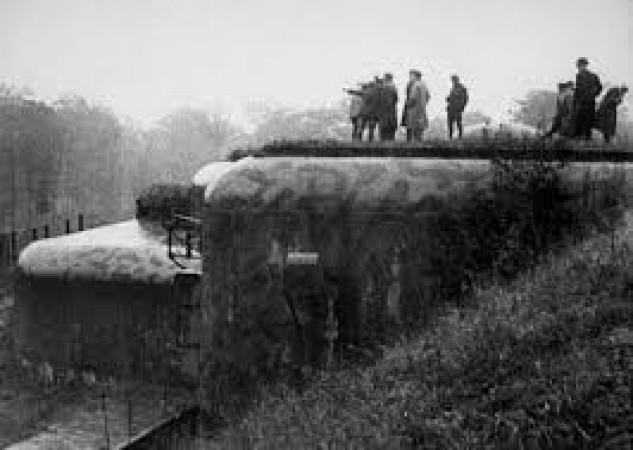
The Maginot Line stands as a testament to France's attempt to fortify its eastern border against potential German aggression following the devastation of World War I. Named after André Maginot, the French Minister of War during the 1920s, this line of defense comprised a series of elaborate fortifications, obstacles, and bunkers stretching along the French-German border.
A Bold Defensive Strategy
Building a Barrier:
France embarked on constructing the Maginot Line in the aftermath of World War I, primarily as a defensive measure against potential German invasions. The line aimed to prevent a replay of the devastating trench warfare that characterized the First World War.
Strategic Design:
The Maginot Line wasn't merely a physical barrier; it was a complex network of fortifications designed to withstand a frontal assault. It incorporated a blend of concrete bunkers, artillery emplacements, underground barracks, and interconnected tunnels, all intended to provide French troops with a formidable defensive position.
Facing the German Threat
Responding to History:
The decision to construct the Maginot Line was deeply influenced by France's bitter experiences during World War I. The horrors of trench warfare, coupled with the memory of Germany's aggressive military tactics, compelled French strategists to adopt a defensive posture.
A Lesson from the Past:
France's military leadership believed that by fortifying its eastern border, it could deter any future German aggression and buy precious time to mobilize its forces in the event of an invasion. The Maginot Line was thus conceived as a bulwark against potential incursions.
Hitler's Challenge:
However, the effectiveness of the Maginot Line was put to the test when Adolf Hitler rose to power in Germany. His militaristic ambitions and expansionist policies posed a direct threat to France's security, leading to a renewed focus on the defensive capabilities of the Maginot Line.
The Fall of France
The Blitzkrieg Unleashed:
In May 1940, Hitler's forces launched a lightning-fast invasion of France, bypassing the heavily fortified Maginot Line by invading through Belgium and Luxembourg. This audacious maneuver caught the French off guard, exposing the limitations of their defensive strategy.
A Strategic Blunder:
Despite its impressive fortifications, the Maginot Line proved ineffective against the innovative tactics employed by the German military. The use of combined arms, mobile warfare, and aerial bombardment rendered the static defenses of the Maginot Line obsolete.
Legacy and Lessons Learned
Historical Significance:
The fall of France and the subsequent bypassing of the Maginot Line marked a significant turning point in military history. It highlighted the importance of adaptability, mobility, and strategic flexibility in modern warfare, lessons that continue to resonate with military planners to this day.
An Enduring Symbol:
Although the Maginot Line failed to fulfill its intended purpose, it remains a symbol of France's determination to defend its territory and preserve its sovereignty in the face of external threats. Its legacy serves as a cautionary tale about the dangers of relying too heavily on static defenses in a rapidly evolving strategic environment. The Maginot Line stands as a testament to the complexities of military strategy and the challenges of balancing defense with adaptability. While it ultimately failed to stop the German advance during World War II, its legacy endures as a reminder of the importance of innovation, flexibility, and strategic foresight in the face of ever-changing threats.
Can diabetic patients also eat egg-bread on an empty stomach? Know what the doctor's opinion is...
Do not drink excessive tea, coffee or cold drinks in summer, it can damage these body parts